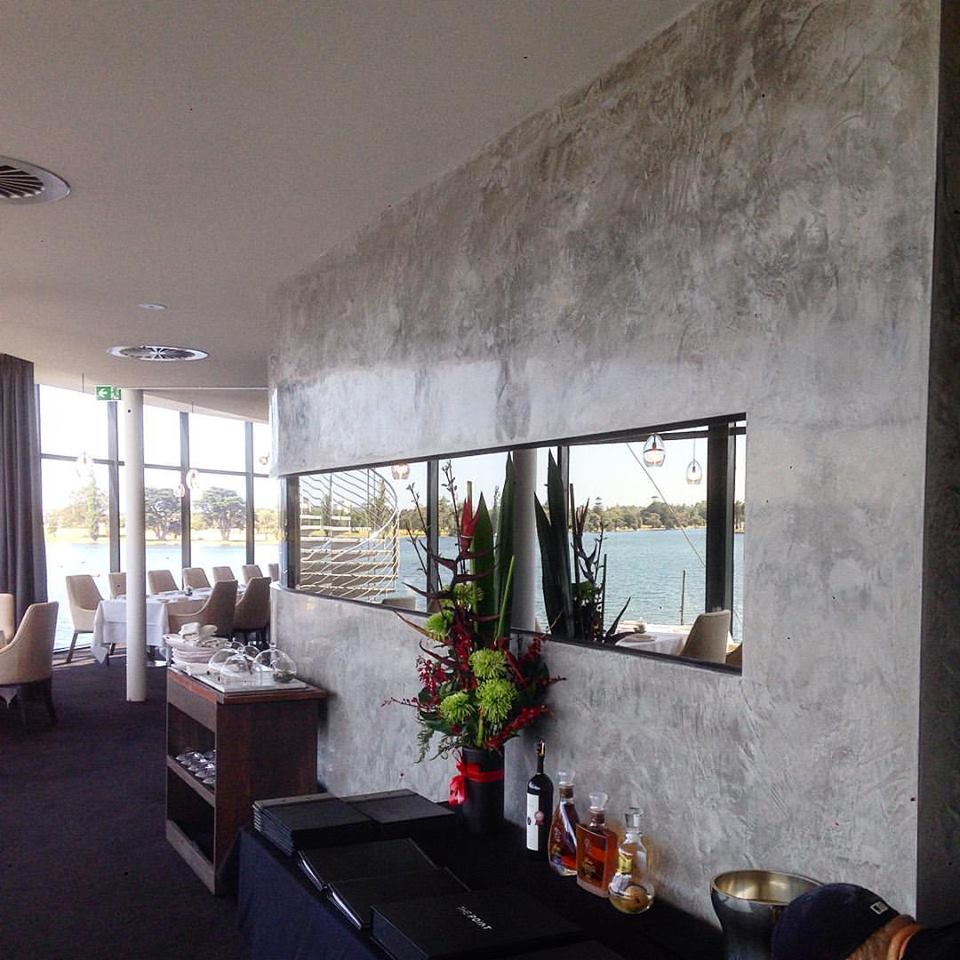VENETIAN POLISHED PLASTER | ORIGINAL LIME VS. SYNTHETIC
‘Venetian polished plaster’, ‘Venetian plaster’ or ‘polished plaster’ is not just one type of finish or wall coating, it is a term which is widely used to describe a variety of finishes that are associated with the beautiful Italian City of Venice. Most applicators, designers and architects prefer to call Venetian polished plaster a technique or a look rather than a particular product to avoid confusion between materials.
Venetian polished plaster is becoming a very popular wall coating in Australia and it is thus important that the finishes associated are named clearly. Artisans in the industry all agree that synthetic or cement replicas should not be confused with true lime plasters because they do not achieve the longevity or finish that original Venetian plaster does. A Venetian polished plaster is defined by its application and finish. A true Venetian polished plaster is applied with a highly polished stainless steel trowel and is naturally burnished to a high sheen with the same tool used to apply base and finishing coats. Artificial plasters are applied like paint and achieve an artificial sheen with use of clear gloss polyurethanes, sealers or waxes commonly used on timber floors which need to be re-applied periodically to maintain their appearance.

Lime plasters are based on limestone (calcium carbonate). The limestone is baked at high temperatures so as to extract carbon dioxide and water, leaving behind calcium oxide in a powder form which is highly reactive with water. The next step of the process is to add water to the remaining material, being slaked lime, after which the mixture is aged for at least two years, resulting in hydrated slaked lime. To turn this mixture into Venetian polished plaster, pigments, marble dust and other minerals are added.
To get a finish that exhibits depth and richness characterized by Venetian polished plaster, it must be applied by skilled applicators using traditional natural lime materials and advanced application techniques. During application a lime plaster must be managed carefully by the applicator so as to achieve sufficient curing between coats. The cure must be managed so as to achieve the desired strength and aesthetic appearance often referred to as ‘movement’ or 'character' in the finish. As a lime plaster cures, a chemical reaction occurs which reverts the material back to a limestone composition (calcium carbonate). The resulting finish is extremely durable and is able to last the life of the building, meaning there is no need to re-coat or re-paint as is needed with acrylic or cement based paints.

Lime plasters are quite thick, hiding surface imperfections and irregularities. Whereas synthetic plasters are much thinner, showing imperfections and thus requiring a lot more preparation prior to application. Another benefit of lime plasters is that they are very flexible, up to three times more flexible than cement products, meaning the substrate is able to remain flexible also, reducing cracking. Being water permeable enables the surface to breathe as lime plasters take in and release water.
Another advantage of traditional lime plasters is their ability to resist mold and mildew. The pH level of lime prevents mold from forming on its surface. The moisture permeable characteristics of lime plaster also help in this aspect.
Lime plasters are slowly being placed in the list of green building products due to their longevity. Less material is needed over a buildings life cycle due to no need for re-coating. Lime plasters are also manufactured using traditional methods and are quite efficient to make, having a low embodied energy. Their chemical composition is made up of little to no toxic chemicals, thus containing minor amounts of volatile organic compounds (VOC).
Material choice always comes down to the client or applicator. Unskilled applicators sometimes compete only on the basis of price, which is in most cases contributed to the use of substandard materials and also poor application methods/techniques. This diminishes the reputation of Venetian polished plaster finishes. A beautiful finish requires a lot of training in the correct application methods, techniques and material choice. In the end, the technique determines the result and character of the finish that is capable of lasting the life of the building.

